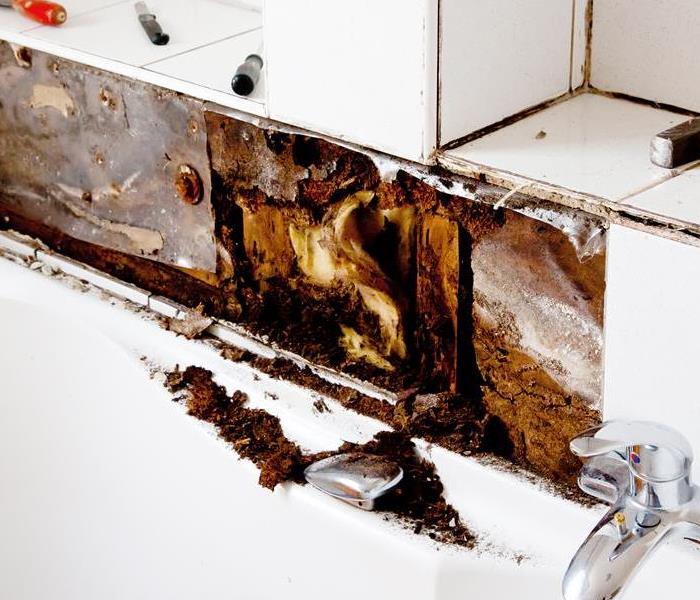Can Mold Grow After a Leak is Fixed?
10/24/2023 (Permalink)
Dealing with water leaks in your home can be a stressful experience, and it's crucial to address them promptly. One common concern is whether mold can continue to grow even after a leak is fixed. In this blog, we'll dive into the factors that can contribute to mold growth post-repair and what you can do to prevent it. Let's explore this topic to help you maintain a clean living environment in your Woburn, MA, home.
Understanding Mold Growth
Mold is a natural part of the environment, and its spores are everywhere, including the air inside your home. Mold spores can become problematic when they find suitable conditions for growth. The key factors that contribute to mold growth are moisture, warmth, and organic materials (such as wood, drywall, or fabric).
Mold and Water Leaks
Water leaks provide the ideal environment for mold growth. When a leak occurs, moisture is introduced into areas that are often hidden from view, such as within walls, under floors, or in ceilings. If these areas remain damp, it creates the perfect breeding ground for mold.
The Importance of Quick Repairs
Addressing water leaks quickly is essential in preventing mold growth. When leaks are fixed quickly and thoroughly, the moisture source is removed, and the conditions that favor mold growth are disrupted. However, even with timely repairs, mold can still develop if moisture was present for an extended period before the leak was discovered.
Hidden Moisture and Mold
One challenge homeowners face is identifying hidden moisture and mold growth. Mold can thrive in concealed areas for weeks or even months before becoming visible or producing noticeable odors. This is why it's crucial to not only fix the leak but also thoroughly dry and assess affected areas for potential mold growth.
Preventing Post-Repair Mold Growth
To prevent mold from growing after a leak is fixed, consider the following steps
- Thorough Inspection: After repairing the leak, conduct a thorough inspection of the affected area to check for any signs of moisture or mold.
- Proper Drying: Ensure that all affected materials are completely dried. Use fans, dehumidifiers, or professional drying equipment to expedite the drying process.
- Mold Remediation: If you suspect or discover mold growth, consult with mold remediation professionals like SERVPRO®. They have the expertise and equipment to safely and effectively address mold issues.
- Regular Maintenance: Implement a regular maintenance schedule for your home to catch potential leaks and moisture issues early.
- Improved Ventilation: Proper ventilation in areas prone to moisture, like bathrooms, basements, and kitchens, can help prevent condensation and reduce the risk of mold growth.
While fixing a leak is a critical step in preventing mold growth, it's not a guarantee that mold won't develop afterward. Mold can still thrive in concealed areas if moisture was present for an extended period. Prompt repairs, thorough drying, regular maintenance, and vigilance in monitoring hidden moisture are essential in preventing post-repair mold growth. If you suspect mold issues in your Woburn, MA home, don't hesitate to contact SERVPRO® of Burlington/Woburn for professional mold remediation services. Stay proactive, Woburn, and enjoy a mold-free living environment!





 24/7 Emergency Service
24/7 Emergency Service
